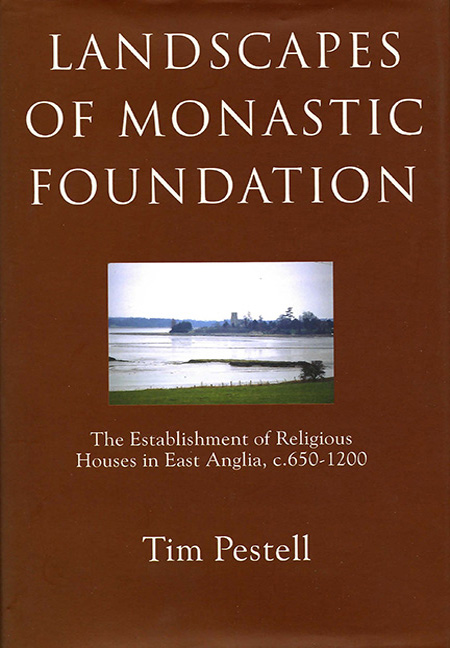Book contents
- Frontmatter
- Contents
- List of illustrations
- Acknowledgements
- Abbreviations
- 1 Introduction: Past and Present Approaches to Monastic Studies
- 2 Monasticism in Middle Anglo-Saxon East Anglia
- 3 The First Viking Age and its Consequences for Monasticism in East Anglia
- 4 Monastic Reform and Religious Life in the Later Anglo-Saxon Period
- 5 The Establishment of Monasteries in the Norman Landscape
- 6 Conclusions
- Bibliography
- Index
3 - The First Viking Age and its Consequences for Monasticism in East Anglia
Published online by Cambridge University Press: 11 May 2017
- Frontmatter
- Contents
- List of illustrations
- Acknowledgements
- Abbreviations
- 1 Introduction: Past and Present Approaches to Monastic Studies
- 2 Monasticism in Middle Anglo-Saxon East Anglia
- 3 The First Viking Age and its Consequences for Monasticism in East Anglia
- 4 Monastic Reform and Religious Life in the Later Anglo-Saxon Period
- 5 The Establishment of Monasteries in the Norman Landscape
- 6 Conclusions
- Bibliography
- Index
Summary
Adominant feature of ninth- and tenth-century English political history is rthe presence of the Vikings. Nowhere do we hear more clearly about Scandinavian raiding activity than in the sphere of religious life, and David Knowles’ assessment that there was ‘a complete collapse of monasticism by the end of the ninth century’ still stands for some. Examining the impact in East Anglia has always been difficult due to the lack of historical sources for the area, a silence which has traditionally been taken to reflect the repercussions of the Scandinavians’ presence. However, reassessing the period is important as it has implications for our understanding of how the Church emerged at the end of the First Viking Age in the tenth century, with its monastic reform. Consideration is also required of the ways in which social structures and tenurial organisation may have been altered within the region if a mass immigration of Scandinavian settlers also occurred.
There are few truly contemporary accounts for East Anglia in this period and sources such as charters, scarce until the Conquest and often of questionable authenticity, are typically contained as copies in much later monastic cartularies, usually belonging to Ely, Bury St Edmund's and St Benet's Abbeys. A basic chronology may be established through the Anglo-Saxon Chronicle, with snippets of local interest supplied in subsequent chronicles, for instance Æthelweard's Chronicon, composed 978×988, and the Annals of St Neots, an early twelfth-century Bury St Edmunds chronicle. To these may be added those of wills, foundation charters and (especially problematic) saints’ Lives. From these sources, we learn that the Vikings first overran East Anglia in 865 (s.a. 866 in ‘A’) before returning in 869 to defeat and kill the East Anglian king, Edmund. Following Edmund's unsuccessful bid to restore political independence to his kingdom, client rule appears to have been exercised, the Vikings only returning in 880. Until the conquest of the Danelaw under the West Saxon kings, East Anglia remained a political entity, now characterised as Danish, under the control of King Guthrum. The end of any independence finally came in 917, when ‘the entire Danish army in East Anglia swore union’ with Edward the Elder.
- Type
- Chapter
- Information
- Landscapes of Monastic FoundationThe Establishment of Religious Houses in East Anglia, c.650–1200, pp. 65 - 100Publisher: Boydell & BrewerPrint publication year: 2004

